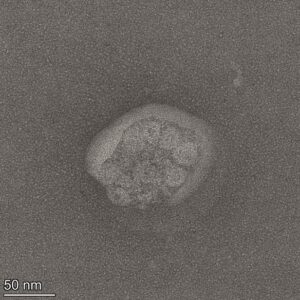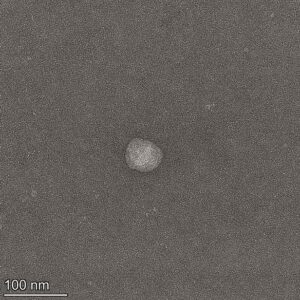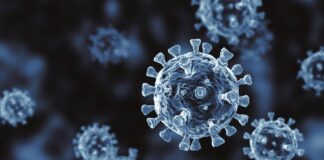Danmeng Shuai, Tiong Gim Aw, Yun Shen, Joan B Rose and John Scott Meschke present state-of-the-art thinking on assessing virus association with particles and the implications for wastewater treatment.
With increasing demand for fresh water, wastewater reuse will be one of the most significant solutions to provide sufficient clean water. However, the presence and persistence of waterborne viruses has long been one of the largest challenges that must be addressed for the safety of non-potable and potable reuse.
In June 2024, California’s State Water Resources Control Board, USA, approved new direct potable reuse regulations, requiring at least a 20-log10 reduction of enteric viruses. These heightened standards underscore the need for more effective virus removal technologies in wastewater reuse.
Environmental engineers, in academia and industry, are now focused on understanding the environmental behaviour of viruses and developing advanced treatment processes to ensure the safety of reclaimed water, thereby meeting these stringent regulatory requirements.
History of environmental virology
The roots of environmental virology originated in the 1930s with the detection of polioviruses in wastewater. By the 1970s, virus testing included downstream applications (removal by treatment prior to discharges), as well as upstream public health uses, to understand the epidemiology of infectious diseases in the community. During the COVID-19 pandemic, the field of environmental virology expanded significantly, with the rapid adoption of wastewater-based environmental surveillance (WBES) providing crucial early evidence of viral spread.
Advancing knowledge
The scope of WBES has now broadened beyond SARS-CoV-2 to include enteric viruses, other respiratory viruses, and even arboviruses, offering valuable insights into the epidemiology of viral diseases and guiding public health strategies.
Significant advancements in environmental virology methodologies are directly linked to the rapid expansion of WBES, not only for concentration and extraction methods, but also the use of the digital polymerase chain reaction (dPCR) and high-throughput sequencing to quantify and analyse the viral community in wastewater. These methods have advanced knowledge of virus types and concentrations in wastewater that will also influence reuse applications.
Assessing risk to human health
While molecular techniques are revolutionising virus monitoring, the assessment of infectivity is still important, particularly if the goal is virus inactivation rather than complete elimination. Culturing viruses for their infectivity offers a more accurate assessment of the potential human health risks posed by these pathogens, unlike the polymerase chain reaction (PCR), which only quantifies viral genomes.
Researchers at the University of Arizona have successfully cultured infectious adenoviruses in reuse treatment chains in large volumes through serial passages. This allows the assessment of up to 10-log10 removals. While many important waterborne viruses, such as human noroviruses, remain difficult to culture, new model systems such as enteroids, zebrafish and immortalised human salivary cells have been employed and successfully used to propagate human noroviruses (Hayashi et al., 2024).
Industrial practitioners have also conducted field studies to assess the efficacy of wastewater treatment processes in mitigating health risks from waterborne viruses. A team from H2O Molecular carried out a year-long sampling campaign across nine wastewater treatment plants, analysing bacteriophages as indicators of human viruses (Worley-Morse et al., 2019).
Their findings suggest that facilities employing biological nutrient removal (BNR), tertiary treatment, and UV or ozone disinfection demonstrated superior performance in removing human viral indicators. BNR secondary processes typically achieved greater than 2-log10 removal of viral indicators, and BNR plus UV and BNR plus ozone were able to reach more than 4- and 5-log10 reduction of the viral indicators respectively.
Virus persistence
The aggregative state of viruses can affect their persistence in wastewater. Viruses were initially believed to exist as free, independent particles during transmission and infection. However, in complex environments such as wastewater, viruses rarely act alone. Instead, they tend to clump together to form aggregates or attach to other substances present in the water. Viruses can, for example, latch onto particles such as organic matter, bacteria, and other impurities found in wastewater, forming what we call particle-associated viruses.
The degree of the aggregative state of viruses also depends on water chemistry and treatment processes. Recent discoveries have shown that some viruses can use the host cell’s secretion pathways to exit the cell in protective extracellular vesicles. These particle-associated viruses are known as vesicle-cloaked virus clusters, or referred to as viral vesicles, where multiple virus particles are enclosed in a fluid-filled sac made of a lipid membrane (see Figure 1).
Figure 1
The discovery of particle-associated viruses enhances our understanding of viral behaviour in wastewater environments, as these viruses can be more persistent during treatment processes and may pose increased risks to human health (Zhang et al., 2021 and 2022).
Tiong Gim Aw analysed particle-associated viruses in secondary effluents collected from five wastewater treatment plants across the USA by using particle-size fractionation through a series of membrane filtration. Many enteric viruses were found to associate with particles, as well as viral indicators such as CrAssphage and pepper mild mottle virus.
What is particularly interesting is that the abundance of a specific virus in a specific fraction of particles with defined sizes is different. For example, adenoviruses were evenly associated with particles across a broad range of sizes of 0.45-100µm, and they were also prevalent in the filtrate (< 0.45µm). In contrast, human noroviruses and enteroviruses were reluctant to bind to particles and were most abundant in the filtrate (< 0.45µm).
Yun Shen conducted the environmental surveillance of vesicle-cloaked virus clusters in wastewater. She identified human norovirus vesicles in both municipal and hospital wastewater and, surprisingly, these viral vesicles contributed to 17-45% of total human noroviruses. Metagenomic sequencing (analysing genetic material from environmental samples) of the vesicles elucidated that many common human enteric viruses were associated with vesicles, including norovirus, rotavirus, astrovirus, and Sapporo virus.
Industrial practitioners also found that particle-association promoted the persistence of viruses in wastewater. A team from Trussell Technologies characterised free chlorine disinfection of bacteriophage MS2, a human virus indicator, in recycled water at a pilot-scale study. MS2 showed a biphasic inactivation profile, exhibiting rapid disinfection kinetics at lower free chlorine CT values, followed by significantly slower disinfection kinetics at higher free chlorine CT values. The particle-association of viruses, as indicated by the turbidity of recycled water, contributed to the reduction in disinfection effectiveness.
Conclusions and recommendations
Environmental virology has made steady progress over the years, particularly driven by methodological advancements. The effective treatment of viruses is critical to meet the stringent safety standards for direct potable water reuse. Assessing viral infectivity through culturing and understanding virus aggregative states and removal throughout wastewater treatment processes are essential. Particle-associated viruses, including vesicle-cloaked virus clusters, exhibit increased persistence during treatment, but not all viruses associate with particles or vesicles in the same way.
Critical questions must be addressed to ensure the future safety of water reuse. The authors offer recommendations from both research and practice perspectives to guide future advancements in this field. First, we need to further advance methodologies to facilitate tracking of viral removal up to 20-log10. This includes improving sample concentration techniques for viruses in wastewater, as upstream sample processing often affects downstream analytical methods.
Moreover, viruses are not ‘lone wolves’, and complex wastewater environments impact virus behaviour and removal through treatment. The association of viruses with particles and the presence of viral vesicles in wastewater have significant implications on treatment processes and virus enumeration for estimating log10 reduction values. A better understanding of the mechanisms of this association in complex wastewater matrices is warranted. Additionally, we must consider how treatment and detection methods may impact the aggregative state of viruses, as this could influence the accuracy of removal and inactivation assessments.
The authors:
Danmeng Shuai is Professor, Civil and Environmental Engineering, George Washington University, USA; Tiong Gim Aw is Associate Professor, Environmental Health Sciences, Tulane University, USA; Yun Shen is Assistant Professor, Civil and Environmental Engineering, George Washington University, USA; Joan B. Rose is Professor, Homer Nowlin Chair in Water Research, Fisheries and Wildlife, Michigan State University, USA; and John Scott Meschke is Professor, Environmental & Occupational Health Sciences, University of Washington, USA.
More information
- Hayashi, T.; Kobayashi, S.; Hirano, J.; Murakami, K., Human norovirus cultivation systems and their use in antiviral research. Journal of Virology (2024), 98, (4), e01663-23.
- Worley-Morse, T.; Mann, M.; Khunjar, W.; Olabode, L.; Gonzalez, R., Evaluating the fate of bacterial indicators, viral indicators, and viruses in water resource recovery facilities. Water Environment Research (2019), 91, (9), 830-842.
- Zhang, M.; Ghosh, S.; Kumar, M.; Santiana, M.; Bleck, C. K. E.; Chaimongkol, N.; Altan-Bonnet, N.; Shuai, D., Emerging pathogenic unit of vesicle-cloaked murine norovirus clusters is resistant to environmental stresses and UV254 disinfection. Environ. Sci. Technol. (2021), 55, (9), 6197-6205.
- Zhang, M.; Ghosh, S.; Li, M.; Altan-Bonnet, N.; Shuai, D., Vesicle-Cloaked Rotavirus Clusters are Environmentally Persistent and Resistant to Free Chlorine Disinfection. Environmental Science & Technology (2022), 56, (12), 8475-8484.










